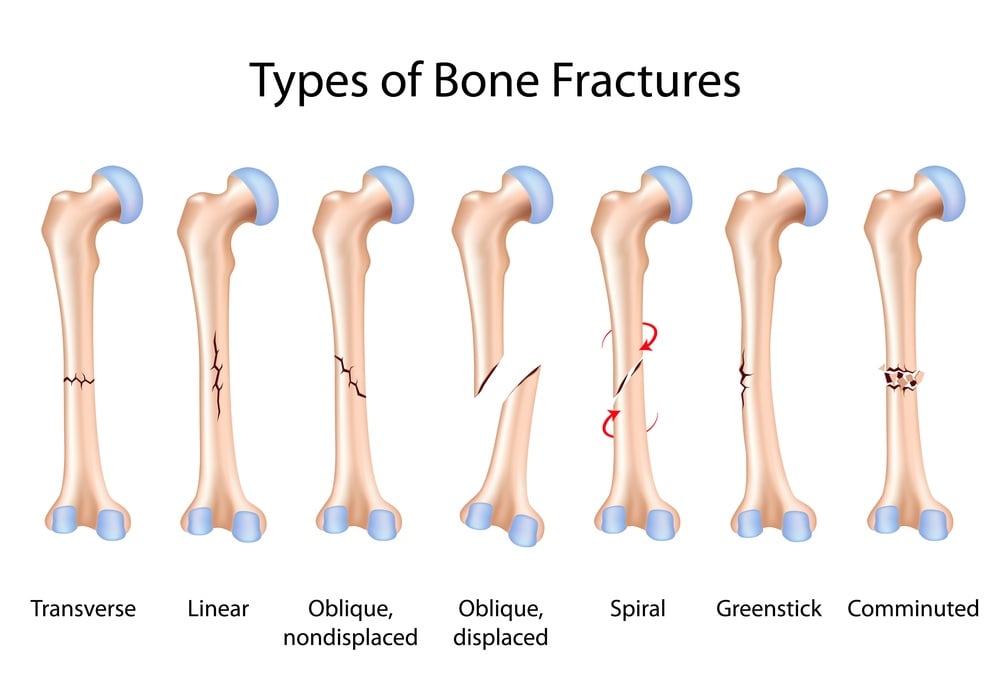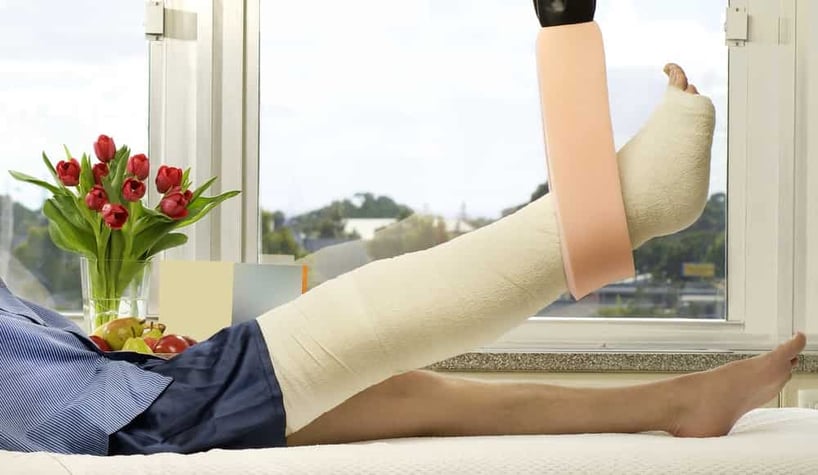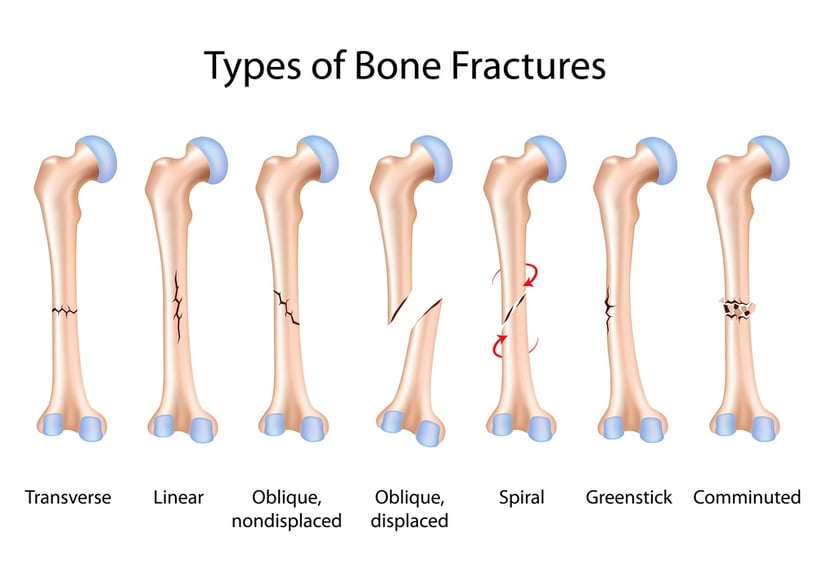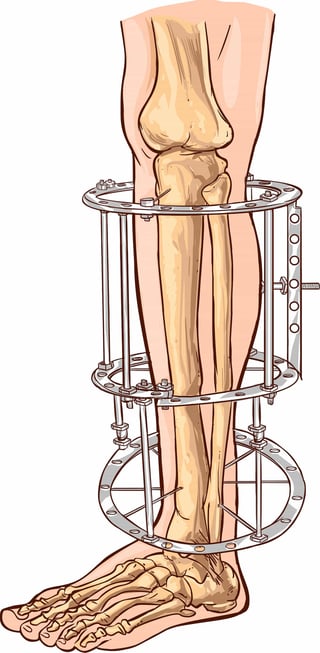Topics:
Search for topics or resources
Enter your search below and hit enter or click the search icon.
December 9th, 2019 | 3 min. read


Fractures are not all the same, and neither are their treatments. A broken toe, for example, can be much simpler to treat than a compressed vertebra or a shattered leg. Sometimes, caring for a fracture requires more than a splint or cast.
What kind of treatment your fracture needs depends on the type of injury you've sustained. But first, what is a fracture?
A fracture occurs when a bone cracks or breaks under pressure of a force that exceeds the bone's ability to bend. Typically, this injury causes significant pain and a loss of function at the site of the injury.
Fractures can happen a number of ways, but the most common causes of fractures are falls, sports injuries, motor vehicle accidents, and osteoporosis (weakened bones, usually due to age). Certain forms of cancer can also contribute to bone brittleness, which may result in cancer patients suffering fractures more easily (particularly in the wrist, vertebrae, and hip).
The type of fracture you may experience depends on the force exerted on the bone and the angle of that force. If you've experienced a sports-related bone break or a motor vehicle accident, you may have a different type of fracture than what you might experience from osteoporosis or the repetitive stress of sports endeavors like running or jumping.

Fractures can occur at any bone in the body. Frequent injuries that orthopedists see include fractures of the toes, feet, legs (shins or femurs), arms (particularly forearms), shoulders, wrists, ribs, vertebrae, and hips. Hip fractures are particularly of concern in older people because they can lead to serious disability.
Fracture symptoms vary depending on the bone you've injured and the severity of the injury. The most common symptoms of fractures are:
In the case of an open fracture that pierces the skin, bleeding may also occur.

You're probably familiar with the basics of fracture management: after receiving an examination and X-rays to confirm the break and how it should be treated, the broken bone is set and immobilized with taping (often seen in the case of toe fractures), a splint, or a cast made from plaster of Paris or fiberglass. In some cases, the patient may even be able to wear a brace or functional cast, allowing limited movement.
With all fractures, the main objective is to realign the fractured bone back into position (called a "reduction") and immobilize it, while the body heals itself. Broken bone ends will "knit" back together in time.
Sometimes, however, doctors cannot complete the reduction process with a cast alone. Because fractures vary in severity and type, sometimes surgery and other techniques are necessary to reduce and immobilize the bone while it heals.

Immediately after diagnosis, some fracture patients may require:
In some cases, orthopedic surgery may be necessary to insert metal rods or plates that can hold bone pieces together. This is referred to as open reduction and internal fixation (ORIF).
This operation requires two steps: first, repositioning the bone into normal alignment; and second, holding the bone together with metal plates or screws attached to the bone's outer surface.
People heal at different rates depending on age, general health, and the extent of the injury. A fracture may heal in as little as four to eight weeks or it may take months. In general, approximately 3 months is required for bones to heal after a fracture. Chronic medical conditions, advanced age, or severe injuries may cause a longer recovery period.
Often, the pain of a fracture will resolve long before the bone is strong enough to bear full weight or resume normal activities. Be sure to follow your doctor's recommendations for rest and rehabilitation.
When your cast, brace, or external fixation device is removed, you may be tempted to return to normal activities right away.
Remember, though, that muscle strength is lost while an injury is immobilized. Your orthopedist will recommend specific exercises and physical therapy (e.g., sports medicine and aquatic therapy) to help you restore mobility, flexibility, and strength.
After your initial examination, your physician may recommend you see a fracture care specialist about your options for immediate and ongoing fracture care and management.
Coastal Orthopedics can help you explore your treatment options. Call us at our Corpus Christi location and make an appointment today!
Article written by: Rob Williams, MD
Dr. Williams has been practicing orthopedic surgery in Corpus Christi since 1998. After graduating from Texas Tech hereceived his medical degree from the University of Texas at San Antonio. At the prestigious Campbell Clinic located at the University of Tennessee, Dr. Williams completed not only an Orthopedic Surgery Residency, but an additional year of Fellowship Training in Spine Surgery. Dr. Williams is dedicated to creating an excellent patient experience in the office or in the surgery suite.
Topics: